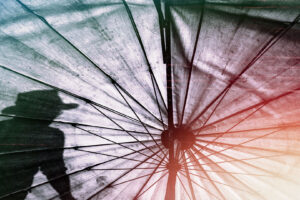Rim lighting is one of those skills that no photographer should be without. You can use this technique for any number of applications, from portraiture to product photos. No matter what subject you're photographing, there’s a great chance that a couple of rim lights can make your images more dynamic. If you'd like to learn how this lighting technique works, I'll show you the basics so you can get started!
Choosing Light Sources
A basic rim lighting setup revolves around the lights. Use one, two or three light sources to highlight your subject from the sides or from behind. You can use any available light sources. Portrait artists tend to use continuous stand lighting, while on-location photographers may use more portable flashes. You can also use light from a nearby window or any other handy light source.
Positioning Your Lights
The position of your rim lighting makes an incredible difference in the final photograph. Place two lights at sharp angles behind your subject or a single light directly behind your subject, and you’ll end up with a bright halo effect around the subject’s edges.
When you move the lights more to the sides, however, that halo effect lightens. This softer rim lighting is useful to fill in dark areas around your subject or to create mystery. Imagine a person lit from the sides, but with a face that remains shrouded in shadow.
Applying Rim Lighting Creatively
Rim lighting serves many purposes. In its most basic form, you can use this technique to separate your subject from the background. No matter what your background is – a busy fall landscape or a neutral backdrop – rim lights will brighten your subject’s edges just enough to make them stand out. Here are a few more great uses for rim lighting:
- In portraits – especially fashion photos, but also graduation and wedding photos – rim lights are often used to put highlights in your subject’s hair, on his or her clothing or on another element that needs to stand out.
- Rim lighting gives product images, still life photos and other static images more dimension. The extra lights also let you use brightly colored filters to create a unique abstract or high-tech look.
- You can use this lighting technique to create silhouettes. Place your subject against a dark background and omit any foreground lighting. Use only the rim lights to create an outline of your subject.
- Shoot through translucent objects. If you have a leaf, a slice of fruit, a delicate flower or anything else that allows a little bit of light through, you can create interesting abstracts with rim lights. A leaf, for instance, will let light through around the veins, ensuring that the veins stand in stark contrast to the rest of the leaf.
Once you’ve mastered this technique, you’ll find that there are infinite ways to use it. And, this isn’t a technique that is limited to one style or genre. Whether you like to create nature photos, portraits or abstract works of art, you’ll find many good ways to use rim lights.




